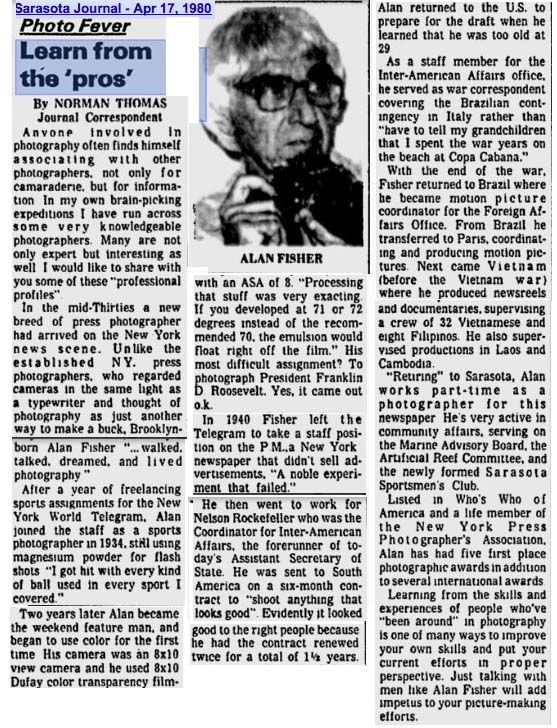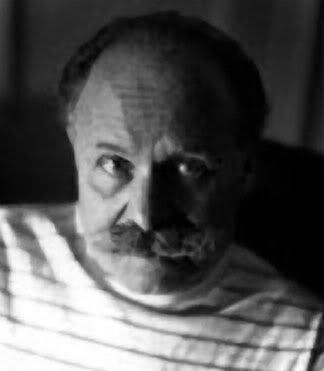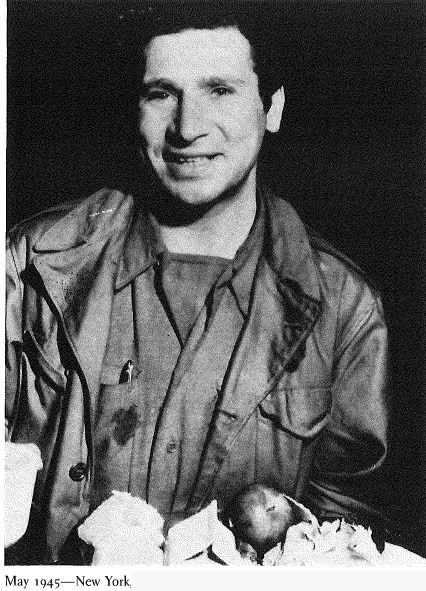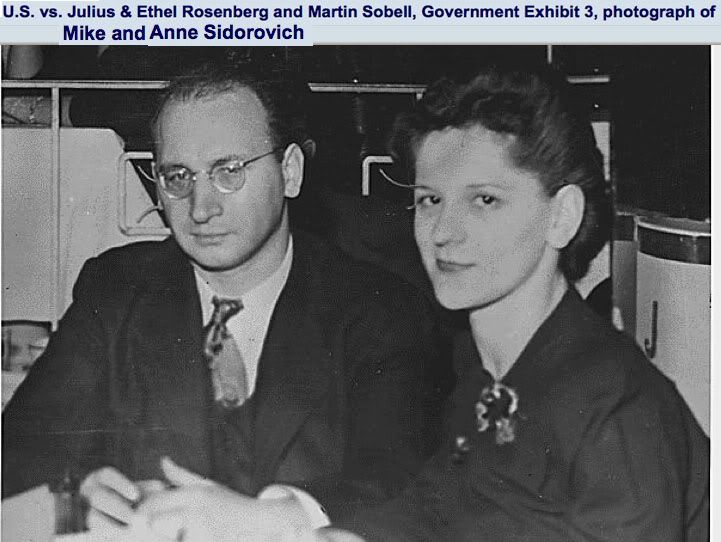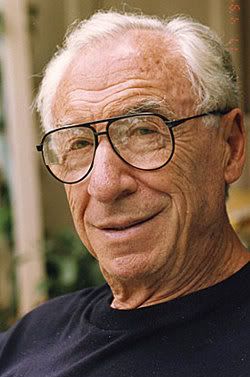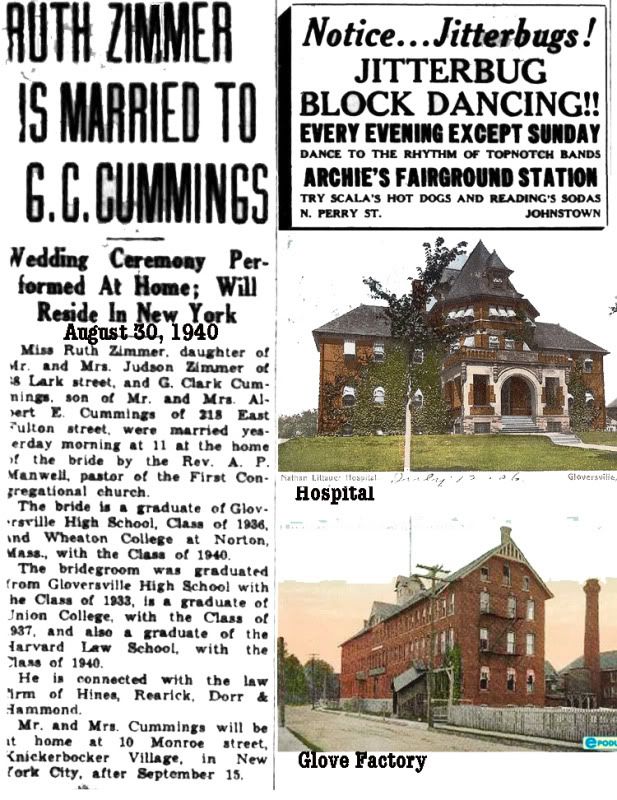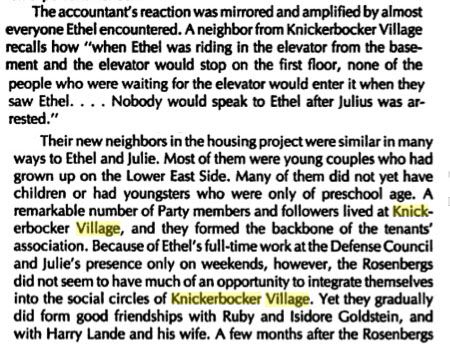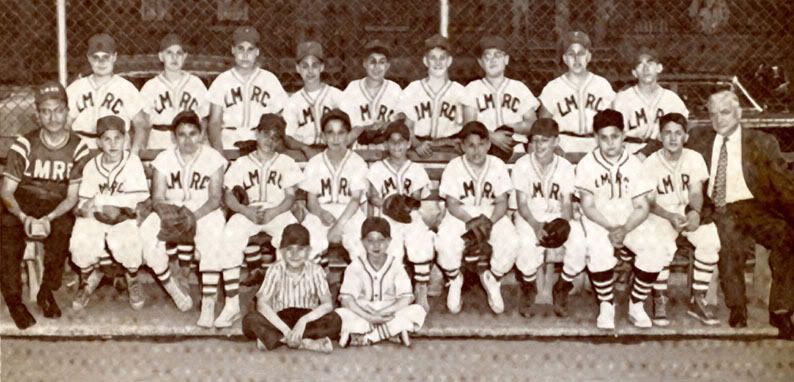In 1969 Josephine and Harold Hatcher decided to retire to Spartanburg, South Carolina, from Indianapolis, Indiana, where they had lived for over thirty years. They came south partly because of the warmer weather and the seasonal changes that make gardening a delightful endeavor and also because their daughter Alice and her family lived here. The Hatchers purchased a home with a small lot on Briarwood Road on the west side of town. From their small back yard they could see that the wooded area behind their house was covered with tall pines, mature hardwoods, and even a stream. The land itself had once been home to cotton fields, was badly eroded, and had become a dumping ground for local trash, but even so, the Hatchers could see that it had great potential. Soon after moving, Harold expanded his property by purchasing three acres behind his lot for $2000 and he began to convert the old, worn-out cotton fields into usable land for his gardening projects. The Hatchers then started spending all of their spare time filling in the eroded gullies, amending the soil, building paths and ponds, and planting over 10,000 trees, shrubs, and flowers. As the garden continued to grow through the 1970s, members of the Spartanburg Men’s Garden Club, the Spartanburg Garden Club Council, Spartanburg Community College, and the Unitarian Universalist Church became intrigued with the Hatchers’ vision for their garden and began to volunteer their time and resources to support the garden’s development. ......... The Hatchers’ work continued into the 1980s, and in 1987, when he was nearly 80 years old, Harold decided to give the garden more permanent protection by donating the property to the Spartanburg County Foundation. Ownership was transferred, a board established, and 501(c)(3) non-profit status acquired, thus assuring the garden’s continuity. The garden was officially given the name Hatcher Garden and Woodland Preserve with the Hatchers’ blessings. Although Josephine’s health became fragile, Harold continued to work in the garden every day and to direct its progress as more additions were made: a gardening shed, pavilion area, and a parking lot. Josephine Hatcher succumbed to health problems in 1999 and Harold restored the wildflower area in her honor. Harold died in 2003 at the age of 96. The ashes of both Hatchers were scattered in the garden to which they had dedicated so much of their lives and themselves. The Hatchers’ vision that culminated in a public garden in their back yard was not unique. Indeed, there are many public gardens and arboreta around the world that began as private family estates. However, what sets the Hatcher Garden apart from other private estates turned public gardens is the fact that the Hatchers were not wealthy landowners. They were humble people dedicated to a rich spiritual and intellectual life and they were unconcerned with material gain....
Showing posts with label 10 Monroe. Show all posts
Showing posts with label 10 Monroe. Show all posts
Friday, August 10, 2012
Whose Who In Knickerbocker Village History: Harold and Josephine Hatcher
Hatcher and his wife Josephine lived in the G Building, 10 Monroe Street. In 1940 they were employed by the WPA working on agricultural research.
From the hatcher garden
Whose Who In Knickerbocker Village History: Alan Fisher
Fisher lived in the G Building, 10 Monroe Street.
Part of an interview done with him for a library of Congress oral history project:
Biosketch: Alan Fisher
FISHER: I was born in Brooklyn in 1913. I graduated from high school, Brooklyn Technical High School, was going to be a chemical engineer, and changed my mind. I started to work for the New York World Telegram as a freelance photographer, and then after a year of that, was given a job as sports photographer. In 1934 I started with them. Then I became special features and color photographer and general all-around photographer on their staff until 1942. Then I left them because I had a very good job offer to join the staff of the newspaper PM. I was on the staff for two years and did an awful lot of coverage of Army camps. I spent almost one year covering Army camps. Then I got a call from Washington from Alexander Murphy, who had been with the AP and had been our photo assignment editor on PM. Al asked me whether I'd go to South America for a six-month contract to work for Nelson Rockefeller's office. At that time, Nelson was the Coordinator of Inter-American Affairs. It was equivalent to modern-day Assistant Secretary for Latin America, but there was no such title at that time. So I said I didn't know whether I could get a leave of absence, and he said, "Sure, we can arrange it with Ralph Ingersoll," the publisher. They arranged it, and I arranged then to go to South America. The interesting thing was that I was given just general ideas on what was wanted, and then I went to Washington on my way to Miami to pick up the plane to Brazil, which was my starting point. I said, "Any final instructions? Specifically what do you want?" Fisher Goes to South America as Photographer for Rockefeller's IIA Program It was an assignment of a lifetime. Al Murphy said, "Just take anything that looks good to you." And those were my instructions for Latin America. I spent two years instead of two months in Latin America on a contract for Nelson Rockefeller, and I photographed Brazil, basically the war effort, industry, prominent people, politicians, and so forth. I went over to Chile after a year and a half, was sent over to Chile to cover the break in relations with the Axis, and after three months there, I was fortunate in getting there in time to cover the break. Florence came with me as my interpreter. She spoke Spanish, I didn't. Then she went back to Brazil, and Vice President Wallace came down to visit Latin America. I was assigned by Washington to cover him for the combined American press. I spent a month with him, then went back to Chile for a month, and then back to Brazil. By that time, I had been reclassified to be 1A, and I got a call from Washington. I said, "I'll be right back."
Q: 1A meaning in the draft.
FISHER: Yes. I had been 2B, essential war worker. The day I got back to the States, they decided that men over 29 were not wanted anymore, particularly married men, and I was automatically reclassified to 2B again. I was given a choice then of going back to Brazil or going over as a war correspondent with the Brazilian Expeditionary Force.
Q: At this point, let me ask a couple of questions to clarify exactly what you were doing with the Nelson Rockefeller program, the IIA program. Were you doing entirely photographic work in connection with things Brazilian, or were you trying to get out any information about the United States and its relationship with Brazil? Fisher's Role in US War Effort Pictures for Publication in US to Acquaint US With Latin America And Have US Stories Played Back to Latin America
FISHER: My job was strictly a one-way job. I was photographing and writing stories to send back to the United States to acquaint the Americans with Latin America. Because at that time, the war wasn't going too well, and our fallback position was Latin America. We were doing a lot of things in Latin America to help the Latin Americans, such as helping them build a steel plant out of Rio, bringing in equipment for them to manufacture airplane motors, heavy equipment, tractors, and so forth, raising the level of food production, and trying to raise the health standards. We were doing this all throughout Latin America, and one of the things I was to do was to photograph this effort, write stories and send them back. The Agency would then distribute them through the wire services, so they were getting a great play. But this really was a fallback position for us. In the event that we did get driven out of the States, we would fall back to Latin America. [Editor's underscoring. It is not thought that the American public ever knew of this possible fallback consideration.] So there was some strategic importance to what I was doing, but it was all the other way. In other words, I wasn't disseminating any information about the United States in Latin America. I was also covering stories for the two slick magazines that the coordinating office put out in Latin America, EM/GUARDA, which is in Brazil and Portuguese, and EM/GUARDA, which was in Spanish for the rest of Latin America. That was really much like the forerunner of Life magazine, the same format, big slick color, a very, very good-looking publication, and a very popular magazine in Latin America. So that carried stories of the American war efforts and battles and American military activity.
Q: Did you write any of those stories?
FISHER: No. No, my pictures were used for that. They were in-house stories out of Washington, but there many of my pictures used for that. Then when I went back, I went back to Washington, and there was a hiatus. I thought I would like to get into the military, because I had been offered a commission as a captain before I left for Latin America. Those positions were no longer available.
Interviewed by: G. Lewis Schmidt Initial interview date: July 27, 1989Q: I want to start out with having Alan give a brief description of his background before he became affiliated with the Agency or its predecessor agencies and institutions, and then we'll take it from there. In the meantime, as I feel that I want to prompt him on particular subjects, I will intervene with a question. Otherwise, I will let him say pretty much what he wants to talk about. So Alan, please begin with a brief bio sketch of your background, and then take it from there.
Biosketch: Alan Fisher
FISHER: I was born in Brooklyn in 1913. I graduated from high school, Brooklyn Technical High School, was going to be a chemical engineer, and changed my mind. I started to work for the New York World Telegram as a freelance photographer, and then after a year of that, was given a job as sports photographer. In 1934 I started with them. Then I became special features and color photographer and general all-around photographer on their staff until 1942. Then I left them because I had a very good job offer to join the staff of the newspaper PM. I was on the staff for two years and did an awful lot of coverage of Army camps. I spent almost one year covering Army camps. Then I got a call from Washington from Alexander Murphy, who had been with the AP and had been our photo assignment editor on PM. Al asked me whether I'd go to South America for a six-month contract to work for Nelson Rockefeller's office. At that time, Nelson was the Coordinator of Inter-American Affairs. It was equivalent to modern-day Assistant Secretary for Latin America, but there was no such title at that time. So I said I didn't know whether I could get a leave of absence, and he said, "Sure, we can arrange it with Ralph Ingersoll," the publisher. They arranged it, and I arranged then to go to South America. The interesting thing was that I was given just general ideas on what was wanted, and then I went to Washington on my way to Miami to pick up the plane to Brazil, which was my starting point. I said, "Any final instructions? Specifically what do you want?" Fisher Goes to South America as Photographer for Rockefeller's IIA Program It was an assignment of a lifetime. Al Murphy said, "Just take anything that looks good to you." And those were my instructions for Latin America. I spent two years instead of two months in Latin America on a contract for Nelson Rockefeller, and I photographed Brazil, basically the war effort, industry, prominent people, politicians, and so forth. I went over to Chile after a year and a half, was sent over to Chile to cover the break in relations with the Axis, and after three months there, I was fortunate in getting there in time to cover the break. Florence came with me as my interpreter. She spoke Spanish, I didn't. Then she went back to Brazil, and Vice President Wallace came down to visit Latin America. I was assigned by Washington to cover him for the combined American press. I spent a month with him, then went back to Chile for a month, and then back to Brazil. By that time, I had been reclassified to be 1A, and I got a call from Washington. I said, "I'll be right back."
Q: 1A meaning in the draft.
FISHER: Yes. I had been 2B, essential war worker. The day I got back to the States, they decided that men over 29 were not wanted anymore, particularly married men, and I was automatically reclassified to 2B again. I was given a choice then of going back to Brazil or going over as a war correspondent with the Brazilian Expeditionary Force.
Q: At this point, let me ask a couple of questions to clarify exactly what you were doing with the Nelson Rockefeller program, the IIA program. Were you doing entirely photographic work in connection with things Brazilian, or were you trying to get out any information about the United States and its relationship with Brazil? Fisher's Role in US War Effort Pictures for Publication in US to Acquaint US With Latin America And Have US Stories Played Back to Latin America
FISHER: My job was strictly a one-way job. I was photographing and writing stories to send back to the United States to acquaint the Americans with Latin America. Because at that time, the war wasn't going too well, and our fallback position was Latin America. We were doing a lot of things in Latin America to help the Latin Americans, such as helping them build a steel plant out of Rio, bringing in equipment for them to manufacture airplane motors, heavy equipment, tractors, and so forth, raising the level of food production, and trying to raise the health standards. We were doing this all throughout Latin America, and one of the things I was to do was to photograph this effort, write stories and send them back. The Agency would then distribute them through the wire services, so they were getting a great play. But this really was a fallback position for us. In the event that we did get driven out of the States, we would fall back to Latin America. [Editor's underscoring. It is not thought that the American public ever knew of this possible fallback consideration.] So there was some strategic importance to what I was doing, but it was all the other way. In other words, I wasn't disseminating any information about the United States in Latin America. I was also covering stories for the two slick magazines that the coordinating office put out in Latin America, EM/GUARDA, which is in Brazil and Portuguese, and EM/GUARDA, which was in Spanish for the rest of Latin America. That was really much like the forerunner of Life magazine, the same format, big slick color, a very, very good-looking publication, and a very popular magazine in Latin America. So that carried stories of the American war efforts and battles and American military activity.
Q: Did you write any of those stories?
FISHER: No. No, my pictures were used for that. They were in-house stories out of Washington, but there many of my pictures used for that. Then when I went back, I went back to Washington, and there was a hiatus. I thought I would like to get into the military, because I had been offered a commission as a captain before I left for Latin America. Those positions were no longer available.
Whose Who In Knickerbocker Village History: Rabbi Max Felshin
The rabbi lived in the G building, 10 Monroe Street.
Turns out that Judith Coplon was really guilty.
Judith Coplon Socolov (May 17, 1921 – February 26, 2011) was one of the first major figures tried in the United States for spying for the former Soviet Union; problems in her trials in 1949–50 had a profound influence on espionage prosecutions during the McCarthy era. Coplon obtained a job in the Department of Justice shortly after she graduated from Barnard College, cum laude in 1943. She transferred to the Foreign Agents Registration section in 1944, where she had access to counter-intelligence information, and was allegedly recruited as a spy by the NKGB at the end of 1944. She first came to the attention of the FBI as a result of a Venona message in late 1948. Coplon was known in both Soviet intelligence and the Venona files as "SIMA". She was the first person tried as a result of the Venona project—although, for reasons of security, the Venona information was not revealed at her trial. FBI Special Agent Robert Lamphere testified at her trial that suspicion had fallen on Coplon because of information from a reliable "confidential informant". An extensive counter-intelligence operation planted a secret document for her to pass to the Soviets. FBI agents detained Coplon in March, 1949 as she met with Valentin Gubitchev, a KGB official employed by the United Nations, while carrying what she believed were secret U.S. government documents in her purse. Coplon was convicted in two separate trials, one for espionage in 1949, and another for conspiracy along with Gubitchev in 1950; both convictions were later overturned in 1950 and 1951, respectively in appeal. The appellant judge in New York concluded that, while the evidence showed that she was guilty, FBI agents had lied under oath about the bugging. Moreover, he wrote, the failure to get a warrant was not justified. He overturned the verdict, but the indictment was not dismissed. In the appeal of the Washington trial, the verdict was upheld, but, because of the possible bugging, a new trial became possible. For political and evidentiary reasons it never took place. Due to these legal irregularities, she was never retried and the government ultimately dropped the case in 1967.
Labels:
10 Monroe,
Judith Coplon,
Rabbi Max Felshin,
who's who
Monday, July 16, 2012
Joe Darion's Impossible Dream
To dream ... the impossible dream ...
To fight ... the unbeatable foe ...
To bear ... with unbearable sorrow ...
To run ... where the brave dare not go ...
To right ... the unrightable wrong ...
To love ... pure and chaste from afar ...
To try ... when your arms are too weary ...
To reach ... the unreachable star ...
This is my quest, to follow that star ...
No matter how hopeless, no matter how far ...
To fight for the right, without question or pause ...
To be willing to march into Hell, for a Heavenly cause ...
And I know if I'll only be true, to this glorious quest,
That my heart will lie will lie peaceful and calm,
when I'm laid to my rest ...
And the world will be better for this:
That one man, scorned and covered with scars,
Still strove, with his last ounce of courage,
To reach ... the unreachable star . On 9/11/2011 Congressman Dennis Kucinich honored Joe Darion
Mr. Speaker, I rise today to honor the memory of a man who inspired the American people with beautiful song, Mr. Joe Darion, lyricist of ``Man of La Mancha.'' Born in New York City in 1911, Mr. Darion worked throughout his life in every genre of music from popular songs to opera. Mr. Darion attended City College before serving his nation in World War II. In the early 1950's he had three Top-10 hits; the Patti Page ballad ``Changing Partners'', the Teresa Brewer novelty ``Ricochet'', and Red Buttons' comedy hit ``The Ho Ho Song''. Mr. Joe Darion is most known for his beautiful lyrics of ``The Impossible Dream,'' which quickly became one of the most beloved pop anthems of our time. ``Man of La Mancha'' opened in New York in 1956 and ran for an incredible 2,328 performances. In recognition of his heart-warming lyrics, Mr. Darion was rewarded a Tony Award for best score. ``The Impossible Dream'' has affected thousands of people, young and old. His lyrics have inspired and touched countless Americans. His words dive deep into the human soul and character. His words, Mr. Speaker, please join me in honoring the memory of a man who touched millions of Americans with his inspiring lyrics and, enabled countless people everywhere to ``Dream the Impossible Dream'', Mr. Joe Darion.
Whose Who In Knickerbocker Village History: Joe Darion
He and his wife Helen lived at 10 Monroe Street, apt GD6, from approximately 1940-1949.
Born in New York City in 1917 his real name was Joseph Schmul. Darion studied journalism at City College of New York and served in the Navy during World War II. After the war, he began writing lyrics. He had three Top 10 hits in the 1950s: "Changing Partners," the Patti Page ballad; "Ricochet," recorded by Teresa Brewer; and "The Ho Ho Song," a comedy number from Red Buttons. He also wrote children's songs such as "The Growing-Up Tree", "The Midnight Train", "The Lollipop Tree", "The Goonie Bird Song" and "Little Red Train to the Zoo".
Darion's first Broadway show was "Shinbone Alley," a jazz opera. He also wrote "Illya Darling," an adaptation of the movie "Never on Sunday." His biggest hit was his writing for Man of La Mancha. He wrote the lyrics to the "Impossible Dream!"Joining ASCAP in 1951, he wrote for radio, TV, films, theatre and concerts. His chief musical collaborators include George Kleinsinger, Ezra Laderman, Guy Wood, John Benson Brooks, Herman Krasnow, and Mitchell Leigh. He died in 2001.
Stanley Rich: FBI Files
Rich Rosenberg
Rich, from this sampling, seems to have come out innocent of any espionage charges.
Note, however, all the informants that are pressed into service.
Labels:
10 Monroe,
Helen Darion,
rosenbergs,
Stanley Rich
10 Monroe Street: 6th Floor and the FBI
Goff 6th Floor
During Julius Rosenberg's incarceration his cellmate Jerome Tartakow was utilized to gather information from Julius. Tartakow passed on a story that prior to her arrest Ethel took $7000 and a Leica camera from the Rosenberg KV apartment and placed it for safe keeping with a sympathizing neighbor. Subsequently there was systematic hunt for that unnamed neighbor and evidence the FBI thought would be further incriminating. Nothing was ever found and some believe Tartakow's story may have been invented. Sophie Goff, Irving's ex-wife was suspected. She was then living on the 6th floor. The above is a record of all of the investigation of people who lived on the 6th floor in 1952.
During Julius Rosenberg's incarceration his cellmate Jerome Tartakow was utilized to gather information from Julius. Tartakow passed on a story that prior to her arrest Ethel took $7000 and a Leica camera from the Rosenberg KV apartment and placed it for safe keeping with a sympathizing neighbor. Subsequently there was systematic hunt for that unnamed neighbor and evidence the FBI thought would be further incriminating. Nothing was ever found and some believe Tartakow's story may have been invented. Sophie Goff, Irving's ex-wife was suspected. She was then living on the 6th floor. The above is a record of all of the investigation of people who lived on the 6th floor in 1952.
Labels:
10 Monroe,
Irving Goff,
rosenbergs,
Sophie Goff
Sunday, July 15, 2012
Whose Who In Knickerbocker Village History: Irving Goff
an excerpt from his wikipedia entry
Irving Goff (1900 - 17 May 1989) was a member of the Communist Party USA and the Abraham Lincoln Battalion, a unit that volunteered to fight during the Spanish Civil War for the Popular Front. During World War II, he was a member of the American Office of Strategic Services, and was instrumental in setting up guerrilla units working behind enemy lines in North Africa and Italy.[1] His exploits as a guerrilla in Spain are considered to be the inspiration for Ernest Hemingway's novel For Whom the Bell Tolls. Irving Goff's parents, of Jewish origin, emigrated from Odessa, Russia to New York in 1900. He grew up in the streets of Brooklyn and Long Island. He was a premier body builder (famous as the "Adonis" of Coney Island's Muscle Beach) and worked as an adagio dancer and professional acrobat before becoming an organiser for the Communist party in New York. Goff arrived in Spain on 4 April 1937, where he joined the International Brigades, working as a driver. In December 1937, he volunteered for dangerous guerrilla operations which frequently required him to work behind enemy lines for up to weeks at a time. ........ One of their objectives was the destruction of the main supply bridge spanning the Albarracín River. The operation may have been the inspiration for Ernest Hemingway's novel For Whom the Bell Tolls. When the book was published in 1940, Goff was critical of the novelist's ignorance of guerrilla operations and the way in which war was treated from "a romantic adventuristic point of view rather than [as] the grim, practical war that it was". In a later interview he said: "I never saw Ingrid Bergman in all the time I was in the war. If I did, I might still be there [Laughs.] The way Gary Cooper blew that bridge - like blowing a seam in a coal mine. I've blown bridges. You put a detonator in the thing and then you'd better be twenty miles away. You went after bridges and railroads. Usually it'd last five or six days behind the lines." ....... In September 1938, with a Republican defeat in sight, the Abraham Lincoln Battalion was withdrawn from the front line and shortly afterwards disbanded. Irving Goff returned to the United States. Once home, he resumed his activities in the Communist Party, and in 1940 was sent on a mission to investigate pro-fascist "synarchista" organizations in Texas, California and Mexico. Posing as a newspaper reporter, Goff filed regular reports about these groups with party leaders, but failed in his effort to link them with the right-wing group America First. Goff continued to campaign for the Spanish cause, and in February 1941, he led 28 Lincoln veterans in a Peace Motorcade to Capitol Hill to lobby against Francoist Spain receiving Lend-Lease aid. In 1941, Goff was approached by former Abraham Lincoln Battalion commander Milton Wolff to work for British intelligence through the Office of Strategic Services (OSS). On Goff's advice, Wolff invited other Lincoln veterans to participate in the group, including William Aalto, Milton Felsen, Mike Jiminez, Vince Lossowski and Alfred Tanz. After the attack on Pearl Harbor, the OSS leader General William Donovan turned the project into a wholly American operation. In 1942, Goff was transferred to North Africa, where he was put in charge of training Spanish recruits to operate behind German lines. Here, he was promoted by Donovan to second lieutenant. After the Allied invasion of Italy in 1943, the OSS Lincolns moved to Naples, where Goff's previous experience in Spain proved a boon for American intelligence. He was appointed by the OSS as liaison officer to the Italian Communist Party, and the Americans promptly started training programmes, using Italian volunteers to wage guerrilla warfare behind the German lines in northern Italy. Goff's infiltration programs parachuted thirty teams of radio operators and meteorologists into enemy-held areas to provide daily weather reports for the Allied air forces. Working with the Italian Communists, Goff built the most effective intelligence operation in northern Italy. With multiple teams behind German lines, he could count on fourteen separate radio reports every day. "We had guerrillas operating on every highway, every railroad, every German convoy. We had identifications, the material in every car on every highway reported through the network of radios".......
Labels:
10 Monroe,
Abraham Lincoln Brigade,
Irving Goff,
who's who
Who's Who In Knickerbocker Village History: Gerald Cook
from the Abraham Lincoln Brigade archives
Gerald Cook was born in St. Louis, Missouri on April 30, 1916 to Catherine and James Cook. He was self educated and was never graduated from high school. As a young man, he moved to New York City and was active in organizing unions, specifically the Department Store Workers union. While on a picket line, he met his first wife, Anne Freedman. They married before he left for Spain to fight in the Abraham Lincoln Brigade. When he returned from Spain, he shipped out to fight the fascists in WWII. He served both on the European front and in the Pacific front. After the war, his first child, Catherine Anne Cook, was born inh 1947. A few years later Gerald and Anne divorced and Gerald married Joan Riddell Barlow, a journalist. They remained married until Jerry did in 1980. They had two children, Joseph Fitzgerald Cook (b. 1952) and Jezebel Cook (b. 1959). He also raised a step-son, John Barlow (b. 1946). Jerry is survived by his two daughters, his step-son and four grandchildren, Alexandra Barlow, Thomas Barlow, James Barlow and Caleb Cook. For most of his post soldier life, Jerry was a journalist, working on various publications. He also worked for local 1199, editing their newsletter. He also worked for the Daily World. He never stopped being an activist and fought all his life for peace and justice. He died firmly believing in his Marxist principles of dialectical materialism.
Labels:
10 Monroe,
Abraham Lincoln Brigade,
Gerald Cook,
who's who
Milt Felsen: The Anti-Warrior
From Mike's memoir, "The Anti-Warrior." Mike and his wife shared a penthouse apartment in the G building with the families of fellow Lincoln Brigade vets Jerry Cook and Irving Goff. This occurred in 1941. Soon the men would be off to fight in World War II.
Who's Who In Knickerbocker Village History: Milt Felsen
Yesterday, July 14, 2012, Saturday Night Fever was shown in Prospect Park. I would have loved to have seen it as well as spot Milt Felsin's name in the credits. Milt lived in Knickerbocker for a brief time in the early 1940's before joining the OSS. I believe he lived in a 10 Monroe Street penthouse apartment.
from the archives of the Abraham Lincoln Brigade
Born in New York City, Milt Felsen left the University of Iowa in his senior year to go to Spain in May of 1937. He served as a machine gunner in the Lincoln battalion and was wounded at Brunete. Upon release from the hospital, he spent the rest of the war as an ambulance driver. In World War Two, Felsen joined the Office of Strategic Services with other Lincoln veterans. Wounded and taken prisoner in North Africa, he spent two years in prisoner of war camps in Italy and Germany. Felsen’s memoir of childhood and the war years, The Anti-Warrior, was published by the University of Iowa in 1989. It is one of the few autobiographies by Lincoln veterans. It is a great read. Milt accomplished many things in peacetime. After the war, he worked for film-related labor unions in New York. In 1960 he ran the East Coast office of the Directors Guild of America. He served on its board for 30 years. He was an associate producer of Saturday Night Fever, the John Travolta film that launched the disco era. His independent producing credits included The Bell Jar and The Directors, a television documentary series. Milt retired to Sarasota, Florida, where he kept in touch with film and theater. Over his busy career, Milt Felsen was staunchly loyal to the Lincolns. He participated in reunions as well as trips to Spain, where his good humor was always appreciated. He will be sorely missed by those who had the good fortune of knowing him. The unassuming and soft-spoken brigadista Milt Felsen passed away on April 8, 2005, in Florida. His wife, Lois Bennett, said of him, “Milt was a sweet guy and a tough guy. Life with him was so much fun.” - Robert Coale
Who's Who In Knickerbocker Village History: Michael and Ann Sidorovich
They lived at 10 Monroe Street from October 1942 until May of 1943 in apartment GB12.
Michael attended Seward Park High and later Stuyvesant High School. After graduation he fought in Spain as a member of the Abraham Lincoln Brigade. Michael and Ann were a suspected Communist spies who were friends and, for a short time neighbors, of the Rosenbergs. They were also witnesses before the Grand Jury during the Rosenberg trial.
Labels:
10 Monroe,
Abraham Lincoln Brigade,
rosenbergs,
who's who
Wednesday, May 30, 2012
Who's Who In Knickerbocker Village History: Moses Asch, part 2
An excerpt from a 1978 conversation with Moses Asch from Pete Seeger's site
"Conversation with Mr. Folkways: Moe Asch" by Jim Capaldi
Moe Asch has been recording folk music longer than most of us have been alive. From the 1930’s, a time of great social and political upheaval, to the present space age, he and his microphones have captured the music and sounds of the people of the world on Asch, Disc and Folkways Records. It was his genius that recognized the value of native American folk song, and the talent of people like Woody Guthrie, Leadbelly and Pete Seeger at a time when neither the music nor the musicians playing it were considered to be worthy of any serious attention. Moe Asch has been a key figure in the folk revival, having been associated with People’s Songs Bulletin, Sing Out! and Oak Publications. But it is chiefly through his role as founder of Folkways Records that we know of him today.
Now in his seventies, Moe Asch remains a vital force in American folk music. His record company still issues dozens of new releases every year and still maintains the policy of keeping all records in print at all times. Material on the more than 1,600 discs ranges from Appalachian mountain music to love songs of Lebanon to sounds of the human body. Looking back over the accomplishments of four decades, Moe Asch’s place as perhaps the foremost oral historian of this century is well established. The discussion that follows took place in May, 1977; it reveals something of Mr. Asch’s methods, philosophy and plans for the future.
Folkscene: Was your father Sholem Asch, a famous Yiddish writer (whose most well-known work was "The Nazarene’) , an influence in your decision to devote your life to documenting the folk music of your time?
Asch: No, except that he used to go on lecture tours throughout the United States in the 1920’s; wherever he went in the old days, in small towns, they had these sheets listing past events of the place, how they began and grew; always the heading had a folk song. So I knew there were folk songs about various areas in the United States that people had documented. My main influence was the John Lomax book which came out in 1913, Cowboy Ballads. That was the first book that documented American folk songs, and I picked that up in Paris.
I’m not interested in music per se, but the literature of it, the words. The music is mostly public domain. Usually somebody, a poet or someone else, wrote about a current event, some local happening. Like tabloids, they were local things that happened that were of interest, like murders. Local people set it down; someone musically inclined put it to music and sang it. My background is literary.
Folkscene: Then why did you go into the recording business, instead of publishing?
Asch: Because I happen to be an electronic engineer and I built equipment for radio stations. They needed recordings to use on the equipment and I got involved with folk music.. .because they told a story, because they documented a thing.
Folkscene: When did you start making records?
Asch: In 1935. My first commercial issue (on the Asch label) was in 1939, "Jewish Folk Songs" by the Bagelman Sisters. I recorded Ukrainian folk songs and Jewish cantorials for the radio; it was a foreign language station.
My first recording of American folk music was Lead Belly’s play parties.
Labels:
10 Monroe,
moses asch,
music,
pete seeger,
who's who
Thursday, May 24, 2012
Who's Who In Knickerbocker Village History: Eve Preminger, 1940 Census
from kramer levin
Before serving as Surrogate for New York County from 1991 to 2005, Judge Preminger was a Justice of the Supreme Court in New York County presiding over a civil commercial and complex and protracted litigation trial part from 1987 to 1990, and, prior to that, handling major criminal trials in the Criminal Division of the Supreme Court. Previously, Judge Preminger worked in private practice where she focused on commercial litigation before becoming the Director of Legal Services, and later President, of the Correctional Association of New York (CANY). In 1975-76 she served as Special Assistant Attorney General in the inquiry on the Attica Prosecution. Judge Preminger was a member of the Founding Board of Advisors of the Gay Men’s Health Crisis, the Board of Directors of Project Green Hope and numerous other community organizations. She has served on many Supreme Court Committees and bar association committees. She is a member of the American Law Institute and the National Association of Women Judges. Judge Preminger received an LL.B from Columbia Law School in 1960, where she was an editor of the Columbia Law Review and later served on the law school faculty. She was selected by representatives of the faculty, students and administration of Columbia University to serve as the Presiding Officer of all intra-university trials involving student sit-ins, strikes and other disturbances.In 1940 Eve was living at 10 Monroe with her father Ingo and her mother Kate.
Labels:
10 Monroe,
1940 census,
eve preminger,
who's who
Who's Who In Knickerbocker Village History: Ingo Preminger, 1940 Census
In 1940 he lived at 10 Monroe Street.
from his 2006 obituary:
from his 2006 obituary:
Ingwald "Ingo" Preminger (25 February 1911, Czernowitz, Austria-Hungary (now Chernivtsi, Ukraine) – 6 June 2006, Pacific Palisades, California) was a film producer. He was also the literary agent for several writers, including Dalton Trumbo and Ring Lardner Jr., both of whom were blacklisted in the McCarthy era. He was brother of actor-director-producer Otto Preminger. He was nominated for an Academy Award for the 1970 film M*A*S*H, the book of which had been sent to him by Lardner, and also produced The Salzburg Connection in 1972. Ingo Preminger studied law and worked as a lawyer in Vienna before emigrating to the United States due to the rise of Nazism. He was survived by his wife of 70 years, Kate, and three children, including former New York probate judge Eve Preminger.
Labels:
10 Monroe,
1940 census,
Ingo Preminger,
who's who
Saturday, October 1, 2011
A 1940 KV Wedding
All the way from Gloversville to the 4th Ward, including stops at Harvard Law. Shows how KV was a very desirable address n those days. Included above is a 1940 ad and views of Gloversville. I checked the 1946 phone book, they're not there. The couple probably left for greener pastures by then.
The news portion of the above article is from an excellent ny state newspaper source
About Gloversville:
Gloversville is a city in Fulton County, New York, that was once the hub of America's glovemaking industry with over two hundred manufacturers in Gloversville and Johnstown. In 2000, Gloversville had a population of 15,413. Ten years later, the population had increased to 15,665. The region, known as "Kingsborough" was acquired by Sir William Johnson. In 1752, Arent Stevens bought land. Puritans from New England settled there at the end of the 18th century. The proximity of forests to supply bark for tanning made the community a center of leather production early in its history. It earned its name for being the center of the American glove making industry for many years. Upon the establishment of a United States Post Office in 1828, Gloversville became the official name of the community.In 1890-1950, 90 percent of all gloves sold in the United States were made in Gloversville. Large tanneries and glove shops employed nearly 80% of the residents of Gloversville and environs. Home workers sewed the gloves from leather that had been cut in factories. Related businesses, such as box makers, sewing machine repairmen, and thread dealers opened to serve the industry. In 1853, Gloversville incorporated as a village. In 1890, it incorporated as a city. Until 1936, Gloversville had a very active electric interurban line, the Fonda, Johnstown, and Gloversville. It ran from Gloversville, through Johnstown, along the Mohawk River to Amsterdam, then to Scotia, then across the Mohawk River, and into downtown Schenectady to the New York Central station. In 1932 in a bold move during the Great Depression it acquired unique Bullet cars in an attempt to revive business. Passenger service ended in 1936, but freight operation continued. Gloversville was the main headquarters for the Schine movie industry. The Glove Theatre was the Schines' favorite movie house. Hollywood movies sometimes premiered in Gloversville before they opened in California. The decline of the glove industry left the city financially depressed, with many downtown storefronts abandoned and store windows covered with plywood. Many of the houses were abandoned when people moved out of town to find jobs elsewhere.Note the reference to the Schine movie industry. More on this
Labels:
10 Monroe,
Fulton History Newspapers,
Gloversville,
Schine
Wednesday, September 28, 2011
Life At 10 Monroe, 1940's
Before it was explained as to why there were so many people living at either 10 or 40 Monroe Street in 1946, it was sad to learn of the Ethel's experience with her building neighbors. Many of those names were the parents of friends' families I knew and I wouldn't have thought they would have been un-neighborly, regardless of political convictions. But then again, the witch hunt was in full force. The above excerpt is from Radosh and Milton's Rosenberg book.
Subscribe to:
Posts (Atom)


